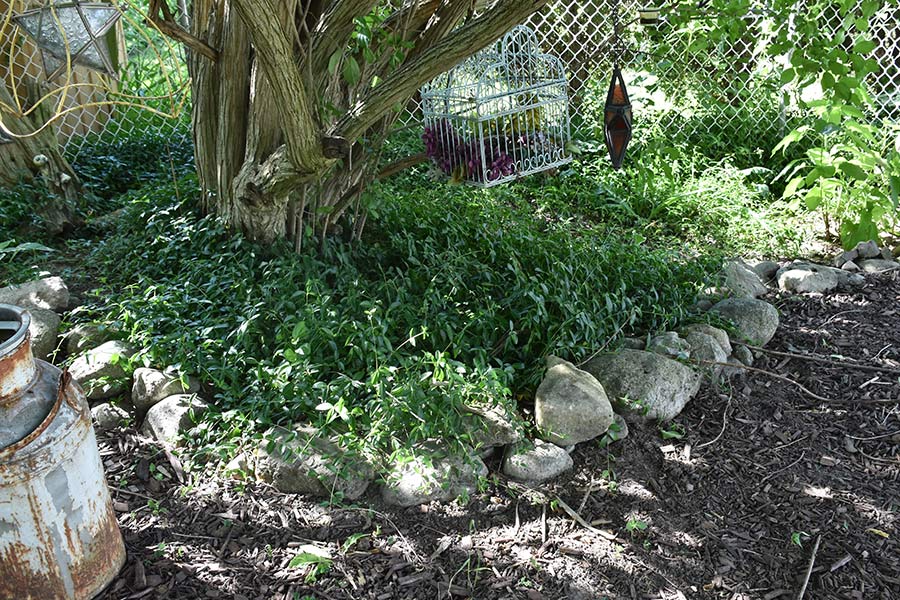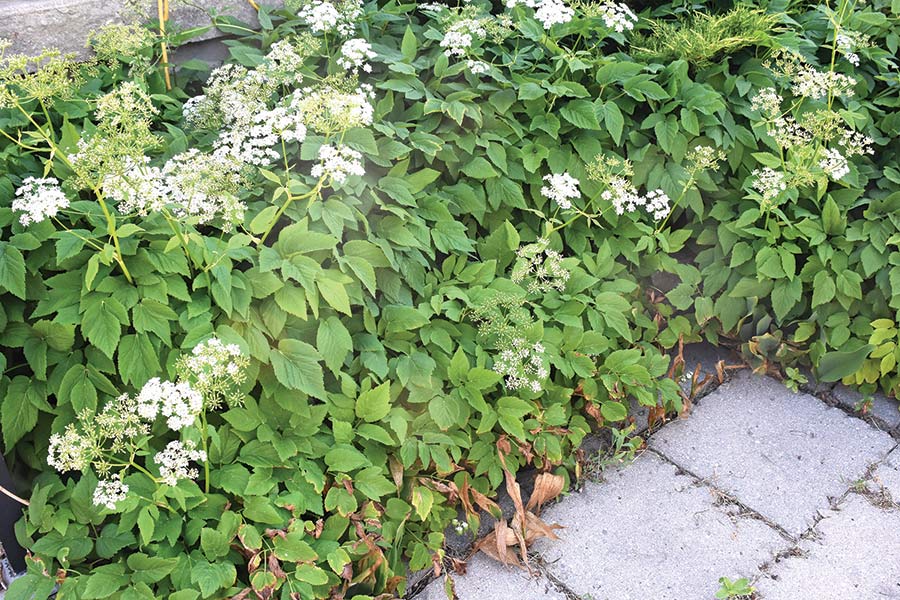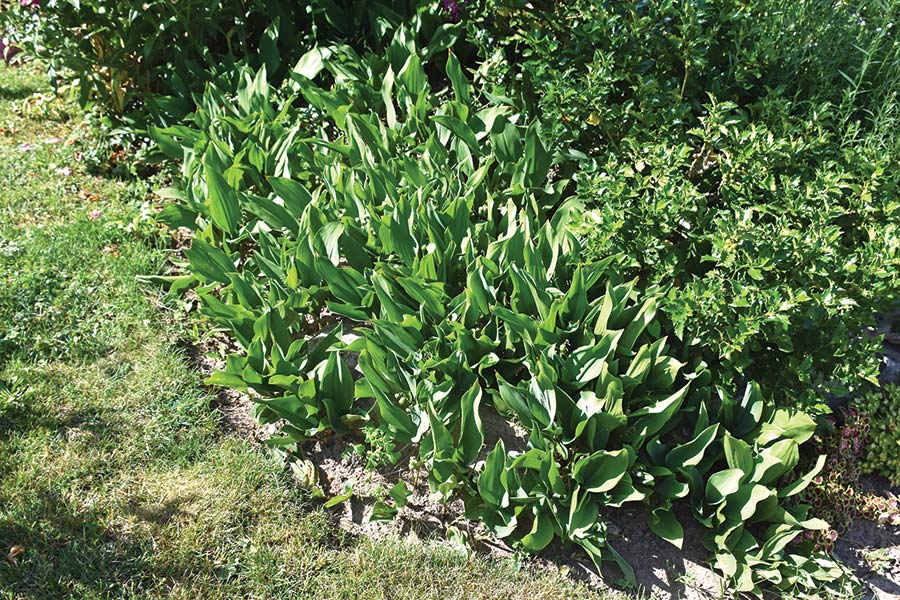GUELPH – My heart sank when I learned that lily-of-the-valley and periwinkle are on the province’s invasive species list.
You see, I was delighted when I moved into my Guelph home 15 years ago and discovered it was periwinkle and not weeds running across the back of my yard.
And I purposely planted lily-of-the-valley in the garden by my hammock so I could lie in leisure immersed in that heavenly fragrance.

PERIWINKLE
But according to the Ontario Invasive Plant Council, lily-of-the-valley and periwinkle are among a long list of non-native plants the council has identified as invasive and posing a threat to native flora and fauna.
Spokesperson Brittany Finigan explained invasive plants are any species that are present and outside their native range, and that have a negative impact on the environment, the economy and society.
Invasives can take over a riverbank, for example, and keep people and animals from accessing the water. They certainly can affect farming and forestry. And when they intrude on natural areas, they can crowd out sources of food and shelter for animals and insects.
“A lot of people love these plants and don’t know they are invasive,” Finigan told me. “And some folks might know but think they have it contained.
“But these plants have ways of spreading you can’t control.”
Garlic mustard, for example, drops thousands of seeds that can easily be picked up and transported in the fur of squirrels and the feet of humans. Birds will eat the berries of the buckthorn tree and deposit the seeds miles away.
“It has to do with natural predators,” Finigan said. “In nature there are checks and balances; with invasives, there aren’t. That’s what allows them to spread.”
The Ontario Invasive Plant Council works with all levels of government, non-profits, researchers and landscapers on management guidelines and strategies, and a growing number of plant growers have pledged not to sell these invasive plants, no matter how pretty the name or attractive the flower and fragrance.
The council has also produced a booklet for home gardeners called Grow Me Instead which contains the names of invasive plants and recommended native plants to grow in their place.
So, daylilies – the tall, orange variety that grows in ditches and wherever else they want – are no good but black-eyed Susans and purple coneflower are good substitutes, according to the brochure.
Goutweed is out, but the large-leaf aster is in.

GOUTWEED
Wild geranium is a recommended substitute for my beloved periwinkle and Starry Soloman’s Seal, an alternate for my oh-so-fragrant lily-of-the-valley.
There’s advice in the brochure on how to dispose of invasives as well. Check with your municipal waste services for localized information, but generally, put all invaders in a dark plastic garbage bag and leave them in the sun for a few weeks to die before proper disposal.
Scrolling through the brochure, I now know I have five or six invaders in my garden. I shudder at the thought of removing them.
But the battle is real folks and I’m more committed than ever to do my part in the fight. And as it seems it’s a fight that will keep me out of the hammock anyway, I suppose I can add lily-of-the-valley to the list.
For more information on what the home gardener can do, visit www.ontarioinvasiveplants.ca. The brochure can be found under the “resources” tab.




